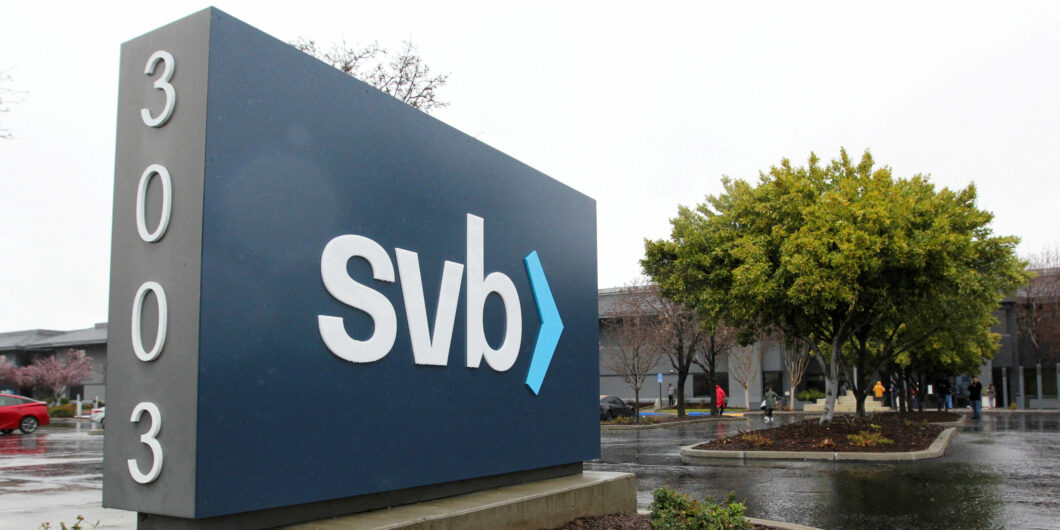The Silicon Valley Bailout
In spite of the financial market losses and crashes of 2022, government agencies kept assuring us that the banking system was in good shape. Until it wasn’t. Then they were citing “systemic risk” as the reason for a bailout. Surprised again!
The Silicon Valley Bank (SVB) failed on March 10 with great fanfare, as befitted the second largest bank failure in U.S. history. It failed, it turns out, with the balance sheet mistake of borrowing very short and investing very long, a mistake so elementary as to display remarkable financial incompetence.
SVB’s failure was preceded by the collapse of Silvergate Bank, and followed by the failure of Signature Bank (the third largest bank failure), by lines of customers making withdrawals from First Republic Bank, and pressure on banks known to have large unrealized losses on their investments. As always happens in a banking crisis, the government intervened. In this case, it guaranteed the uninsured deposits at the failed banks—and presumably all banks—and created a special Federal Reserve loan facility backed by the U.S. Treasury that will lend on an under-collateralized basis to banks which have large market value losses on their bonds and mortgage-backed securities.
After SVB failed, wealthy depositors, including venture capitalists and cryptocurrency barons, presumably sophisticated financial actors, whose money was caught in the failure, immediately began begging the government for a bailout. (It is reasonable to assume that those among the begging parties who are large Silicon Valley Democratic contributors could get their calls to Washington answered.)
The SVB situation reminds us that deposits are in fact unsecured loans to the bank by another name. As everybody knows, for up to $250,000 per depositor per bank, they are guaranteed by the government. For any amount beyond that, as a lender, you are at risk, or supposed to be. If the banks fails, you become an unsecured creditor of the insolvent estate. Every big depositor in SVB knew this perfectly well. They nonetheless chose to make unsecured loans of huge amounts, in one case of $3.3 billion to one poorly managed bank. Thinking of them correctly as lenders, should sophisticated lenders who make bad loans suffer losses accordingly? Of course.
The perpetual wisdom of managing a bank was expressed by Walter Bagehot, the great financial thinker and partner in a successful private bank himself, 150 years ago. It has been re-learned to their sorrow by the banks, both failed and threatened, in recent days. Wrote Bagehot in 1873:
A banker, dealing with the money of others, and money payable on demand, must be always, as it were, looking behind him and seeing that he has reserve enough in store if payment should be asked for…. Adventure is the life of commerce, but caution… is the life of banking.
Bagehot added that what is required is “a wise apprehensiveness, and this every trained banker is taught by the habits of his trade, and the atmosphere of his life.” But the management of SVB and other failures, perhaps too caught up in a speculative environment and too focused on public relations, did not develop sufficient apprehensiveness.
Bagehot’s insight reflects the inherent logic of bank runs. Once a bank has lost its credibility and a widespread withdrawal of deposits and other credit has begun, the holder of a non-government guaranteed deposit (an unsecured loan to the bank, as we have said) is faced with a compelling logic. To hold on and keep the deposit in the now-risky bank has zero upside. The best you can ever get is your money back. But it has a huge downside: you may suffer a big loss on funds that you supposed had minimal risk, you may have even the money you do eventually get back tied up in a receivership, you will have made yourself a first class sucker, and if you are a professional short-term money manager, you may well lose your job. In sum: zero upside, huge downside. So you take the money now. Everyone else is making the same totally rational calculation, and good-bye bank.
All the desperate statements from the bank’s management, as long as they last in their jobs, that really everything is OK, will only convince you that things must be really bad—and every plea from the government to stay calm and have confidence will confirm that your fear is justified. As Bagehot also said, “Every banker knows that if he has to prove he is worthy of credit… in fact his credit is gone.” This is now being demonstrated once again.
Every bailout means taking some people’s money and giving it to others.
“Yellen dismisses bailout” began the page one headline of the Financial Times for March 13, the Monday after the Friday closure of SVB. But by the time that issue of the paper landed in my driveway, a huge bailout had been announced.
The FT article related that “Treasury Secretary Janet Yellen…dismissed calls from some of those with money caught up in SVB to launch a full-scale bailout.” “But,” it continued, “US authorities were facing mounting calls from investors, entrepreneurs and some lawmakers to step in more forcefully to ensure all depositors were made whole.”
Of course, that “all” only meant that big depositors were to made whole, since those with claims up to the quite respectable amount of $250,000 were guaranteed already. The $250,000 obviously covered all the widows and orphans and anybody of modest means. These are the people who proponents of government deposit guarantees always argue are unsophisticated and cannot understand how a bank works, so need to be unconditionally protected. But they already were. So the actual issue was bailing out very sophisticated venture capitalists, cryptocurrency promoters, and various billionaires, all of whom were quite capable of understanding the nature and risks of banking in the SVB fashion.
Should such sophisticated lenders to banks be bailed out from their own financial mistakes?
One partner of a Silicon Valley venture capital firm wrote in this context, “I’m sure many will look upon [SVB’s] demise…and chuckle gleefully about how the technology industry just got a spanking. So be it. We are not seeking special treatment or handouts.”
But they were seeking very special treatment and a very big handout: the government giving them in immediate cash 100% of their uninsured claims on a failed bank receivership. And they got the handout. Whether one was surprised or not by this is perhaps a measure on one’s cynicism.
It is easy for cynics to imagine the calls from the wealthy uninsured depositors and their agents with the U.S. Treasury, the Federal Reserve and the White House. Naturally, internet posts were soon talking of political favors to Silicon Valley Democratic contributors.
As my colleague, Benjamin Zycher, considered the matter:
Now that the bailout of the SVB depositors at 100 percent rather than the nominal $250,000 limit has been announced, it is difficult to discern whether the primary motivation is avoidance of future bank runs… or an old-fashioned effort to reward the wealthy friends of the Democratic Party in Silicon Valley.
As Ben suggests, it is probably both.
Every bailout means taking some people’s money and giving it to others. President Biden has claimed that this bailout does not involve taxpayer money. To the contrary, it makes the U.S. Treasury, in other words the taxpayers, first in line to take losses on the under-collateralized loans the Federal Reserve will make to banks under the bailout plan. Every such bailout tends to encourage risk taking and a lack of wise apprehensiveness in the next cycle.
Meanwhile, losses to the Federal Deposit Insurance Corporation from the bailout of the SVB’s wealthy depositors will be assessed on all other banks. That still means taking money from other people to give to the big SVB depositors. So a small, sound, careful bank in, say, small town Wisconsin, will have money taken from it to give to the California venture capitalists, crypto barons, and billionaires, to cover their losses from the incompetence of the Silicon Valley Bank. That is the idea. How do you like it?



